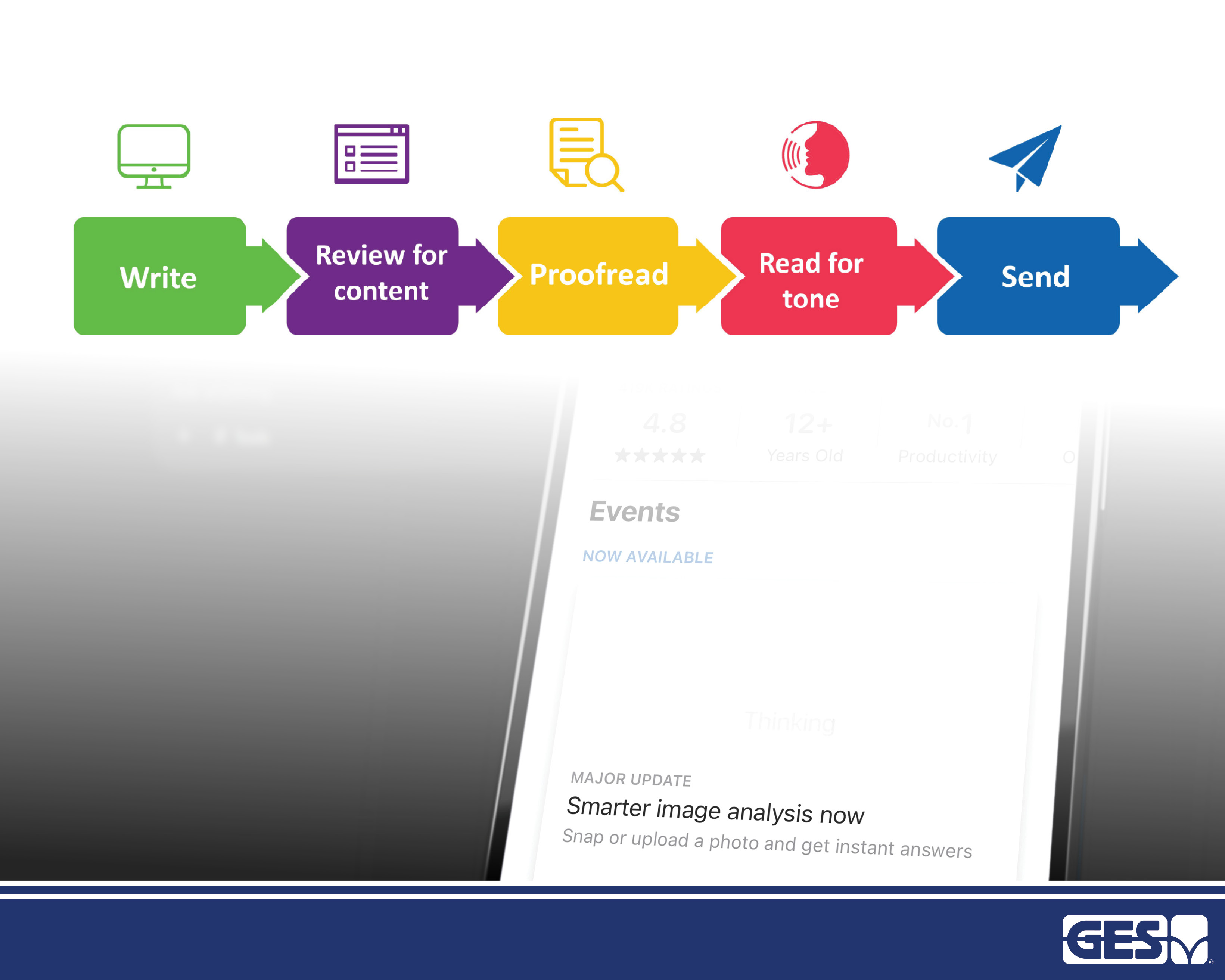Quality Written Communications

Below is a 5-step process you can apply to improve your written communication in email or text.
1. Write
- Get to the point quickly.
- Use short paragraphs and bullet points for emails.
- For emails, consider leaving the To, CC, and BCC fields blank until later in the process to avoid inadvertently sending a draft.
2. Review for content
- Does everything support your message?
- Is what you want the recipient to do clear?
- If responding to an inquiry or request, does your message address what was asked/requested?
- Are necessary attachments or links included? If using attachments, consider attachment size before sending (may be blocked due to size).
3. Proofread
- Check grammar.
- Check for typos; use spellcheck (for email).
4. Read for tone
- Is the tone professional and polite?
- Reading it aloud can be helpful to check your message tone.
5. Send
- Add the recipients – Who is it To and who is being CC’d only? Is it a group text? Is anyone on the distribution list that doesn’t need to be? Is anyone missing?
- Include attachments.
An artificial intelligence (AI) large language model (LLM) such as ChatGPT or Google Gemini may be a useful tool in proofreading and editing written communication. However, there are considerations with potentially sharing confidential information with the AI as well as potential biases and weaknesses of any given AI. Use with caution or you may not achieve the Quality improvement you seek!